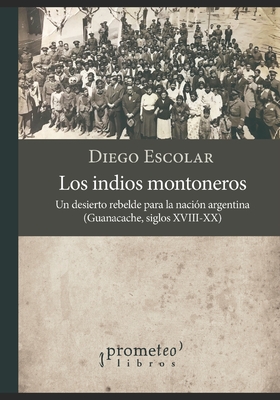First it was the desert, then above it an oasis. An indigenous revisionism for the historiography of Cuyo.
Keywords:
Indigenous revisionism, Territorial conflicts, EthnogenesisAbstract
Los indios montoneros. Un desierto rebelde para la nación Guanacache siglos XVIII-XX, by Diego Escolar, is a detailed effort to discuss the main historical narratives about the indigenous in Cuyo. Just as Guanacache was not always a hostile desert, but on the contrary the natural wetland of the San Juan River, the Indians of Guanacache were never docile or submissive. First towards the colonial regime, then towards the National State, Escolar's work documents numerous indigenous strategies to reclaim land and preserve memory.
In this review I will deal with some of the aspects addressed in the work, segmenting it into four parts: The decolonial without needing to be enunciated; The historical follow-up; The ethnopolitics of water and I will close by stating that it is a book tool. In these four sections I will summarize the strong contribution of the book for the historiography, ethnohistory and anthropologies of Cuyo.
Downloads
References
Escolar, D. a. 2021. Los indios montoneros. Un desierto rebelde para la nación (Guanacache siglos XVIII-XX). Prometeo.
Escolar, D. b. 2007. Los dones étnicos de la nación. Identidades huarpe y modos de producción de soberanía. Prometeo.
Fabian, J. 2019. El tiempo y el otro. Cómo construye su objeto la antropología. Universidad de los Andes.
Guha, R. 2002. La prosa de la contrainsurgencia. Crítica Rodríguez, F. A. 2010. Un desierto para la nación. La escritura del vacío. Eterna Cadencia.
Sarmiento, D. F. 2011. Recuerdos de provincia. Emecé

Downloads
Published
Issue
Section
License

This work is licensed under a Creative Commons Attribution-NonCommercial-ShareAlike 4.0 International License.
Authors who have publications with this journal agree to the following terms:
a. Authors will retain their copyright and grant the journal the right of first publication of their work, which will simultaneously be subject to the Creative Commons Attribution License that allows third parties to share the work as long as its author and first publication in this journal are indicated.
b. Authors may adopt other non-exclusive license agreements for distribution of the published version of the work (e.g., deposit it in an institutional telematic archive or publish it in a monographic volume) as long as the initial publication in this journal is indicated.
c. Authors are allowed and encouraged to disseminate their work through the Internet (e.g., in institutional telematic archives or on their web page) after the publication process, which may produce interesting exchanges and increase citations of the published work (see The effect of open access).

